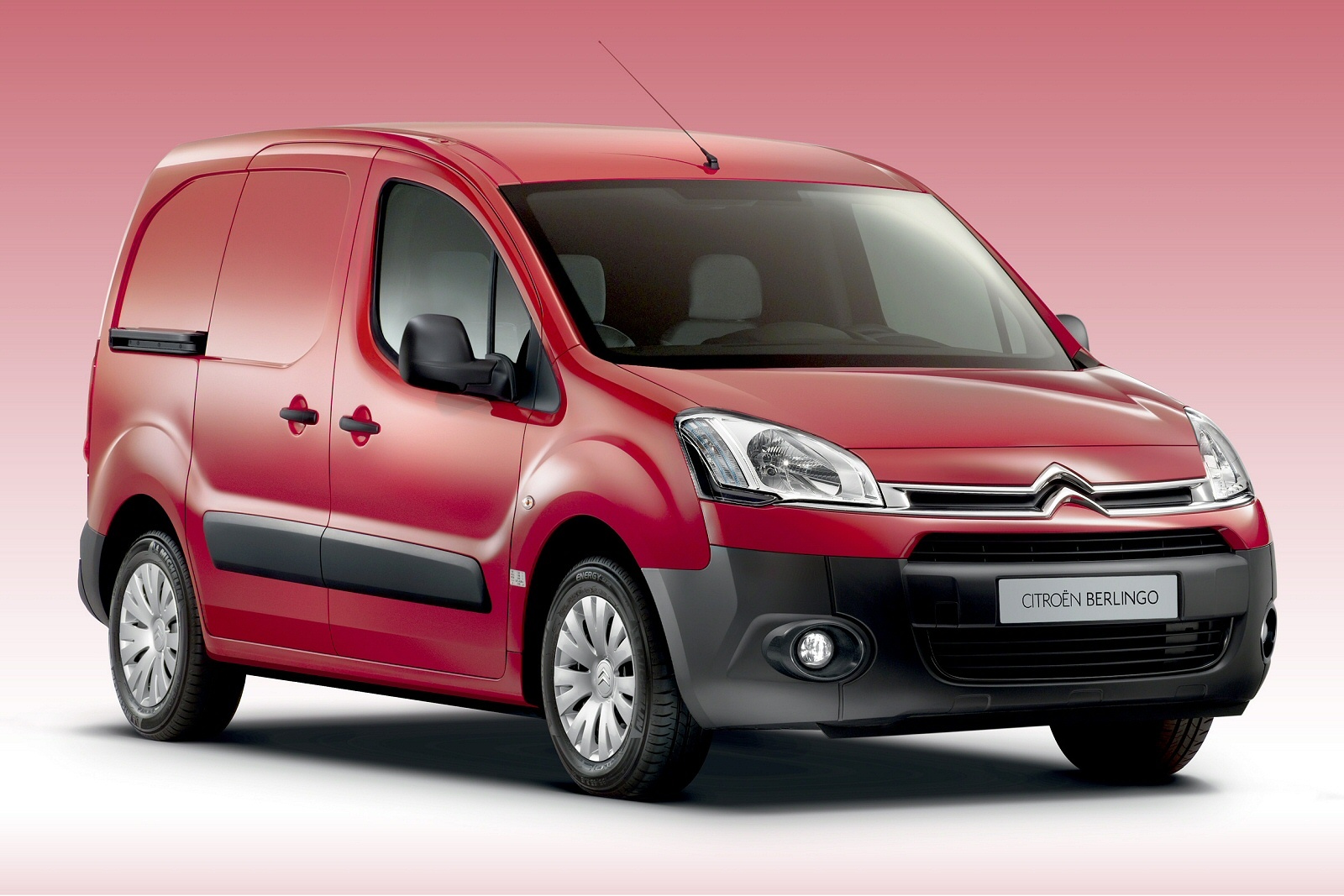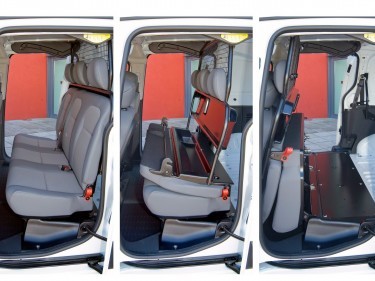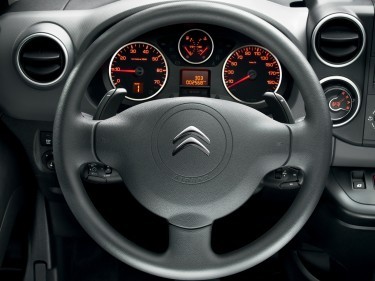With three extra seats, five’s company in Citroen’s Berlingo Crew Van.
It’s the Berlingo’s gutsiest engine that gets the job of powering the Crew Van. The 90bhp 1.6-litre HDi might not sound like much but it delivers its 159lb/ft maximum torque from just 1,750rpm.
The long-wheelbase Berlingo L2 tips the scales at a gross vehicle weight of around 2,130kg, which is roughly 200kg more than the original.
With the Crew Van modifications, it’s heavier still and, as a result, performance isn’t particularly sprightly. At least that sizeable torque output ensures there’s enough pulling power for most situations you’ll encounter.
Fuel economy is another major boon, with the diesel engine returning 48.5mpg on the combined cycle.
This isn’t just a case of Citroen bolting three extra seats to the load floor of a long-wheelbase Berlingo: considerably more thought has gone into the Crew Van package.
In the front, there’s a standard driver and passenger seat arrangement. Behind that is a further row comprising a three-berth bench seat. When the Berlingo is in load-carrying mode, the backs of the second-row chairs can be folded down and the bases lifted forward to maximise the space available for the cargo.
The cleverest bit, however, is the mesh bulkhead that separates the passenger compartment from the cargo to improve safety. It’s attached to the seats in the second row and, as they are folded out of the way, it slides forward along rails mounted on the ceiling to a position just behind the driver and front passenger. The safety barrier remains intact but the full load space is still available.
Access to the rear seats is via the sliding side doors that come as standard, but they aren’t glazed, so occupants in the back don’t have much of a view out. The total payload capacity of the Crew Van is 716kg and the load length varies between 1,320mm and 1,805mm, depending on the position of the second-row seats. With the seats in use, 2.4m3 of load space is available and, once they’re folded, this total increases to 3.35m3.
Standard equipment on the Crew Van includes central locking and electric front windows, plus head restraints and three-point seatbelts for all five seats. The unglazed sliding side doors are included too, as are unglazed side-hinged rear doors.
Citroen has also done a deal with Trafficmaster Smartnav and its satellite navigation system comes as standard. It incorporates a stolen-vehicle tracking system and traffic information functions.
There’s an abundance of storage space inside the Berlingo and numerous clever solutions ready to swallow up all the paraphernalia of your working day.
The door pockets prove particularly useful but the large dash area often ends up doubling up as a shelf for casually chucked bits of paper. These tend to slide off if you accelerate too sharply, a reminder that they shouldn’t really have been there in the first place.
The materials are tough, although anyone looking for the soft-touch plastics or shiny finishes you get in modern cars will be disappointed, but build quality is good and there’s a durable feel throughout which does much to inspire confidence.
In the rear, carrying isn’t in short supply. It’s tough to fault the design of the load bay, which suffers from minimal wheelarch intrusion and has a very low loading lip, which is perfect when hoisting bulky items inside. The large payload capacity and load volume in L2 Berlingos, like the Crew Van, could make some operators question the need for a full-size panel van.
From the outside, there’s nothing to identify the Citroen Berlingo Crew Van as anything other than a conventional compact van. Inside, a second row of seats that boosts total capacity to five opens up a range of interesting possibilities for operators.
With no impact on the Berlingo’s status as a commercial vehicle for taxation purposes, the Crew Van specification could be very handy for those who need their van to fill a diverse range of roles.


